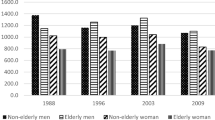Abstract
In the ten-year period from 1990 to 1999, children's consumption has increased dramatically in proportion to family income. In 85% of urban families, children's average consumption is equal to one third or more of the family's income. Resources are being directed to children's food and dietary supplements, toys, travel, computers and other electronic equipment, and educational resources. Children perceive that they have a significant influence on the family's financial decision-making. Problems related to children's consumption include indulgence in unnecessary or harmful purchases, and conspicuous consumption that cannot be sustained by the family's income. While some child-focused spending is viewed as enriching development, other expenditures may harm the family's economic well-being and foster an overly materialistic outlook among children.
Similar content being viewed by others
Author information
Authors and Affiliations
Rights and permissions
About this article
Cite this article
Ying, G. Consumption Patterns of Chinese Children. Journal of Family and Economic Issues 24, 373–379 (2003). https://doi.org/10.1023/A:1027385427303
Issue Date:
DOI: https://doi.org/10.1023/A:1027385427303




